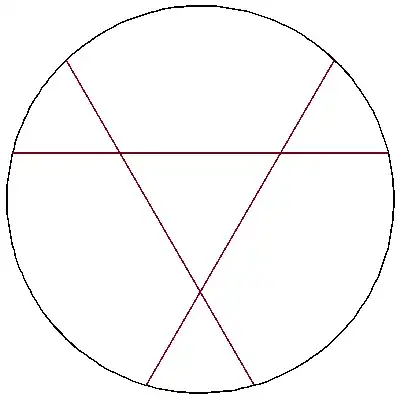Prove that it is not possible to divide a disc into $7$ parts of equal area by means of three straight lines.
Background: I saw this question asked in a way which seemed to imply the possibility of a simple solution. The hint was given: what is the area on each side of a line? Well, obviously, $\frac37$ and $\frac47$ of the whole area, but I can't see where that gets me. Am I missing something really simple?
I tried doing some trig but it's a pain. Even "obvious" things seem difficult to prove rigorously, for example, that the lines intersect each other at $60^\circ$ angles.
Note that the division is possible if the disc is replaced by a (suitable) different shape. Therefore we must actually use the fact that the shape is a disc. (Or perhaps just the fact that it is convex?)
Any ideas? No lengthy trigonometric solutions please, I'm sure I could do that myself if I could be bothered to spend more time on it.
Please note that I am not asking for a ruler and compass construction, so this question and answer is not relevant.

it is not possible to divide a disc into 7 partsremoveequal area! – chouaib Oct 20 '14 at 00:12